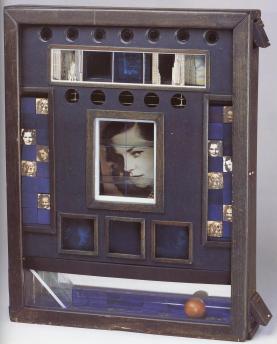If I had to choose one of Calvino’s qualities that is best represented in The Alchemist it would be “quickness.” The novel is only 167 pages in length, and yet so much happens, so much changes, and so many years pass. The book’s pace is rapid with all of the action happening extremely quickly. In his discussion of “quickness” Calvino explained that one of the beauties of literature is that it can take its own pace and time.
“The relativity of time is the subject of a folktale known almost everywhere: a journey to another world is made by someone who thinks it has lasted only a few hours, though when he returns his village is unrecognizable because years and years have gone by.”
The Alchemist certainly adopts this principle. Overall, a very long, arduous, intense journey is summed up quickly, without too much needless detail or overly flowery language. Even the highest action is summarized within a few sentences. These are a few lines from the novel that I feel best exemplify this:
“The times rush past, and so do the caravans”
“Before he could say anything to the alchemist, the two horsemen had become ten, and then a hundred. And then they were everywhere in the dunes.”
 “All this happened between sunrise and sunset, the boy thought. He was feeling sorry for himself, and lamenting the fact that his life could have changed so suddenly and drastically.”
“All this happened between sunrise and sunset, the boy thought. He was feeling sorry for himself, and lamenting the fact that his life could have changed so suddenly and drastically.”
Time is a very important aspect of The Alchemist. As realized by the story’s end, it’s not the destination that matters, but the journey. It’s the time spent and making the most of that time that are important.
“He was actually two hours closer to his treasure…the fact that the two hours had stretched into an entire year didn’t matter” (p. 64).
While all of the novel’s “action” happens quickly, perhaps the aspect that best demonstrates “quickness” is love. As a hopeless romantic, I can’t help but appreciate the notion of love at first sight, but in The Alchemist, it literally takes but a few seconds for Santiago to fall in love with Fatima:
 “When he looked into her dark eyes, and saw that her lips were poised between a laugh and silence, he learned the most important part of the language that all the world spoke—the language that everyone on earth was capable of understanding in their heart. It was love.”
“When he looked into her dark eyes, and saw that her lips were poised between a laugh and silence, he learned the most important part of the language that all the world spoke—the language that everyone on earth was capable of understanding in their heart. It was love.”
Their relationship continued to progress with speed:
“The boy went to the well every day to meet with Fatima. He told her about his life as a shepherd, about the king, and about the crystal shop. They became friends, and except for the fifteen minutes he spent with her, each day seemed that it would never pass.”
I think the fact that this story is told quickly, without excess, is one of the reasons why I love it so much. I’ll admit, I’m not a very big reader. I think that this is in part due to the fact that I can’t stand stories that take too long. I can’t stand too much suspense and I find excessively ornate language frustrating. Usually, I desperately want to know how a story will unfold. Thus, when a story is told quickly, it’s much more enjoyable for me!
 Immediately my mind jumps to the cinematic use of montage. Krevolin very briefly touched upon this idea when he analyzed the Big 7 in relation to The Shawshank Redemption by asking, “How does Andy achieve what he wants in an unexpected, interesting, and unusual way?” Krevolin explains that toward the end of the film, we see some “quick flashes that explain how/why things turned out the way they did.” These “quick flashes,” or elements of montage, are excellent storytelling devices to exemplify the passage of time in a quick way.
Immediately my mind jumps to the cinematic use of montage. Krevolin very briefly touched upon this idea when he analyzed the Big 7 in relation to The Shawshank Redemption by asking, “How does Andy achieve what he wants in an unexpected, interesting, and unusual way?” Krevolin explains that toward the end of the film, we see some “quick flashes that explain how/why things turned out the way they did.” These “quick flashes,” or elements of montage, are excellent storytelling devices to exemplify the passage of time in a quick way.


